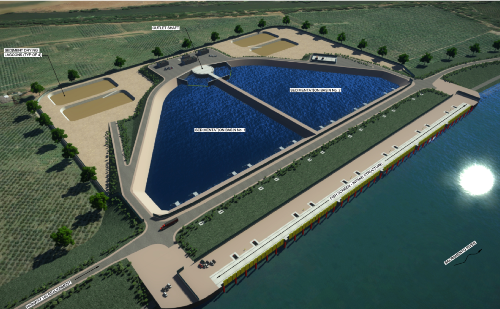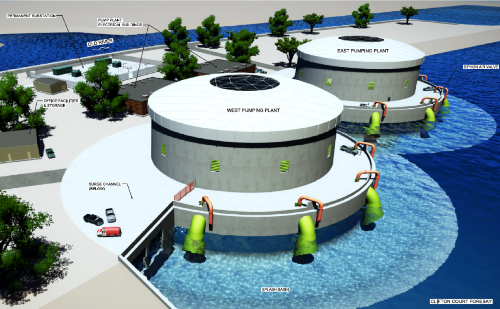

The Bureau of Reclamation and the California Dept. of Water Resources (CWR) offered additional detail to their revised plan to build a $15-billion water conveyance system in the Sacramento-San Joaquin Delta. Officials released a revised draft environmental-impact report and statement for the new plan, known as California WaterFix. Designed to eliminate the difficulty of obtaining a 50-year permit both to perform habitat restoration and to construct the new water intake system, the two elements have now been split into separate efforts.
Critics were quick to dismiss the revisions as “misguided.” Congressman Jerry McNerney (D-CA), who is also an engineer, said that he “will continue to oppose any proposal that fails to protect the health of the Delta as part of a comprehensive drought solution and leaves part of California ill-prepared for droughts in the future.”
California WaterFix would involve construction of 40-ft-dia, 30-mile-long dual-bore water-conveyance tunnels, three water intakes and associated pipelines. The new intakes would reduce the chance of river-flow reversals that cause salt-water intrusion to habitat and water intakes. New fish screens also would help protect endangered species. Around 15,600 acres of Bay Delta habitat will be restored or protected as mitigation for construction and operation of the new conveyance system, says Mark Cowin, CWR director. The remaining 100,000 acres of restoration included in the old plan will no longer be tied to the new permit and will be executed under a separate effort, he adds.
Engineering revisions include elimination of two concrete-lined sedimentation basins, to be replaced by earthen bays to “eliminate the need for many truck trips and shrink by 75% the volume of concrete needed to build the intake facilities,” Cowin says. Designers were also able to reduce the footprint and the amount of earthwork required for the project.
Public comment on the revised EIR/EIS lasts through the end of August. Officials estimate construction will start in 2018 and wrap up in 2031.
Several environmental organizations opposed to the Bay Delta plan, including Friends of the River and the Environmental Water Caucus, asked for more time to review the new documentation. “This short public comment period looks like a deliberate effort to make it virtually impossible for members of the public to be able to comprehend and respond with meaningful comments to the new NEPA and CEQA documents,” the groups said in a joint statement.
Cowin says the plan offers a more secure option than other options, including doing nothing. “We feel we would be remiss if we didn’t try to fix this system that is so vulnerable to natural disaster and works so poorly for both native wildlife and the people of California,” he adds.




Post a comment to this article
Report Abusive Comment